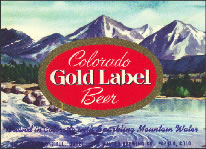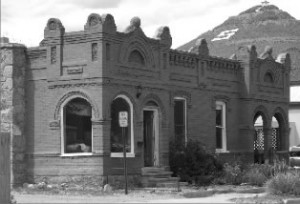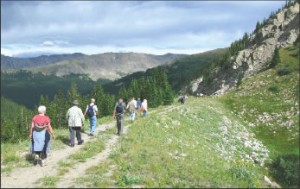by Susan Tweit
If you’re a wildflower lover as I am, take a trip to Colorado’s High Plains soon. This year’s unusual dose of early monsoon moisture has painted the shortgrass prairie in a vivid array of scarlet, yellow, purple, and magenta wildflowers.
Chose one of the scenic byways that traverse eastern Colorado’s seemingly endless sea of prairie and you’ll be find both glorious spring color and fascinating stories.
Head to southeastern Colorado, for instance, and follow the Santa Fe Trail, either beginning at Trinidad, or at the Kansas border east of Lamar on U.S. Highway 50.
“This byway traces one of the West’s historic commercial routes… When Mexico gained its independence from Spain in 1821, the United States gained a new trading partner. (Spain had kept its borders firmly closed to U.S. trade.)
“Merchants from the commercial center of St. Louis had long coveted opportunities in Santa Fe, the wealthy capital of the Spanish territory’s northern frontier. Santa Fe lay more than one thousand perilous miles from St. Louis, but the next nearest trade center, Mexico City, was twice that far.
“Before department stores and Internet shopping, traders delivered every available necessity, ranging from fabric and silverware to nails, axes, and paint– plus French brandy and champagne. …. (That’s a quote from Colorado Scenic Byways: Taking the Other Road, my two-volume set exploring the state’s scenic routes with photographer Jim Steinberg.)
You can still see the ruts left from the freight-wagon traffic on the Santa Fe Trail nearly two centuries ago at places like Iron Springs in the Comanche National Grasslands above La Junta, along the byway route. And for the next few weeks, those ruts will be blanketed by a gorgeous display of wildflowers.
Or head northeast to the Pawnee Pioneer Trails Byway, beginning off Interstate 76 either east of Fort Collins on Colorado 14 or at Sterling or Fort Morgan. This byway cuts overland through the Pawnee National Grasslands, passing Pawnee Buttes, a landmark for travelers voyaging across this open landscape.
“After leading a research expedition up the Platte River and down the Arkansas in 1820, the engineer Stephen H. Long, for whom Long’s Peak is named, delivered the first detailed report on the Great Plains. On Long’s map, the western plains were labeled ‘Great Desert,’ a region ‘unfit for cultivation and of course uninhabitable by a people depending on agriculture.’”
I’m quoting again from Colorado Scenic Byways. Long, as it turns out, was wrong: the western plains are not a desert–as evinced in this season’s green expanses of shortgrass prairie and carpets of wildflowers.
Long was right that this region is a challenge for agriculture, as farmers learned in the 1930s, when plowing up the deep-rooted prairie grasses led to the Dust Bowl, and clouds of soil that darkened skies as far east as the Atlantic Coast.
By the way, Colorado Scenic Byways recently won a gold award as the ForeWord Travel Book of the Year.
That’s a wonderful reward for our effort to document and celebrate Colorado’s iconic routes.
Copyright 2009 Susan J. Tweit. Originally published in the Salida Mountain Mail
Award-winning writer and commentator Susan J. Tweit lives and gardens in Salida when she’s not on the road promoting her new memoir, Walking Nature Home, which inspired one reviewer to write, “You simply must read this book.”


